Remains of clothing are some of the most exciting archaeological finds from the ice. Such finds are invariably made in mountain passes, not on hunting sites. Sometimes, these artefacts are damaged or worn-out, and had probably reach the end of their lifetime. In other cases, complete clothing items are found, and these finds are more mysterious. Why leave behind usable clothing? Such finds have been made both in the Alps and in Norway. One theory is that they are left behind by people disoriented by hypothermia. In the last stages of hypothermia, victims may feel an intense heat and start to undress. Can some of the clothing items derive from people, who froze to death in the high mountains?
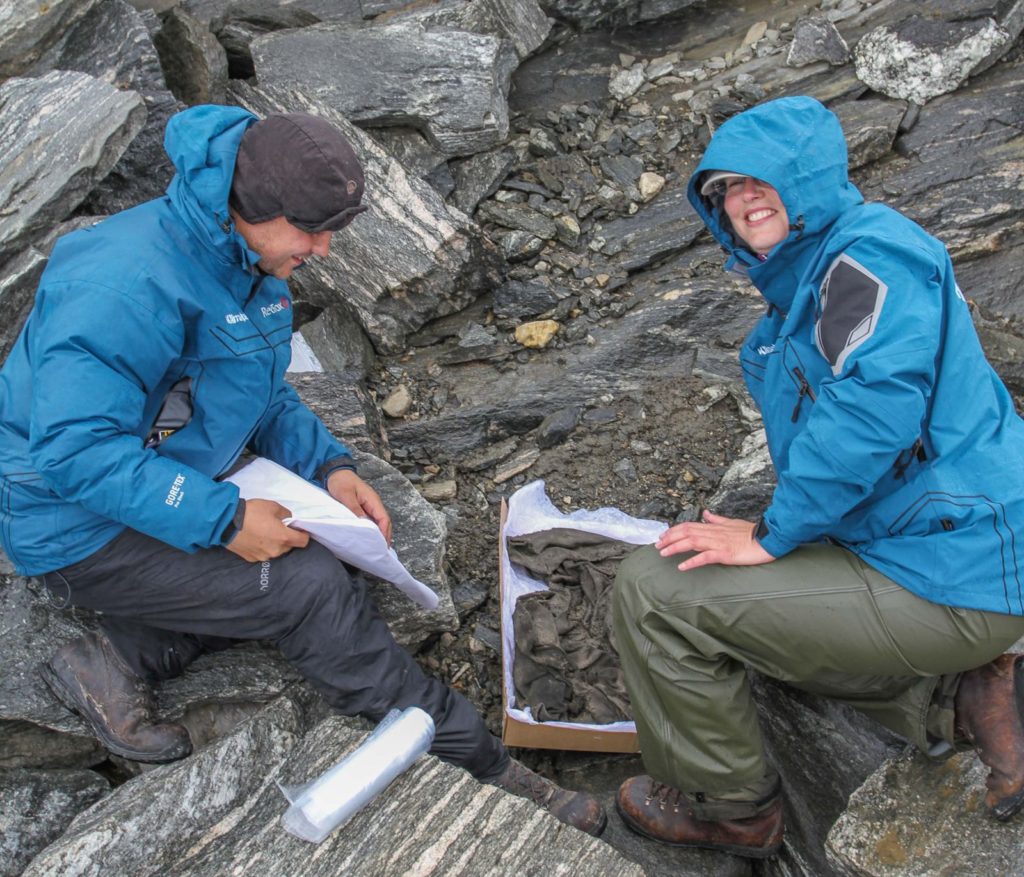
Two complete pieces of clothing have been found in Oppland, both at the Lendbreen site. One is a complete tunic from AD 300, while the other is a complete mitten from AD 1000. Both are very rare finds.
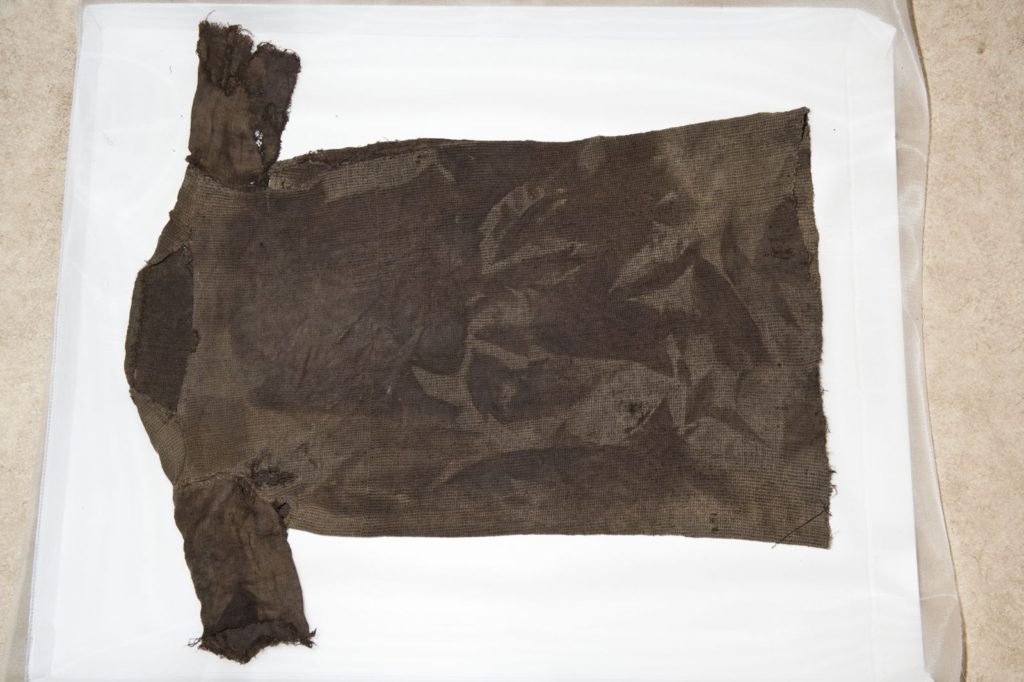
The tunic was found close to the upper edge of Lendbreen in august 2011. When found, it just looked like a bundle of textile. We decided not to try to open it in the field, but wrapped it carefully and placed it in a cardboard box. Then the long trip to the museum began: First by packhorse down to the lowlands, and then by car to the conservation laboratory. The textile bundle was unwrapped in the laboratory and turned out to be a complete tunic. A radiocarbon date showed that it was c. 1700 years old. The Iron Age tunic from Lendbreen is a very rare piece of clothing, and has been published in Antiquity. A short video on the reconstruction has also been produced.
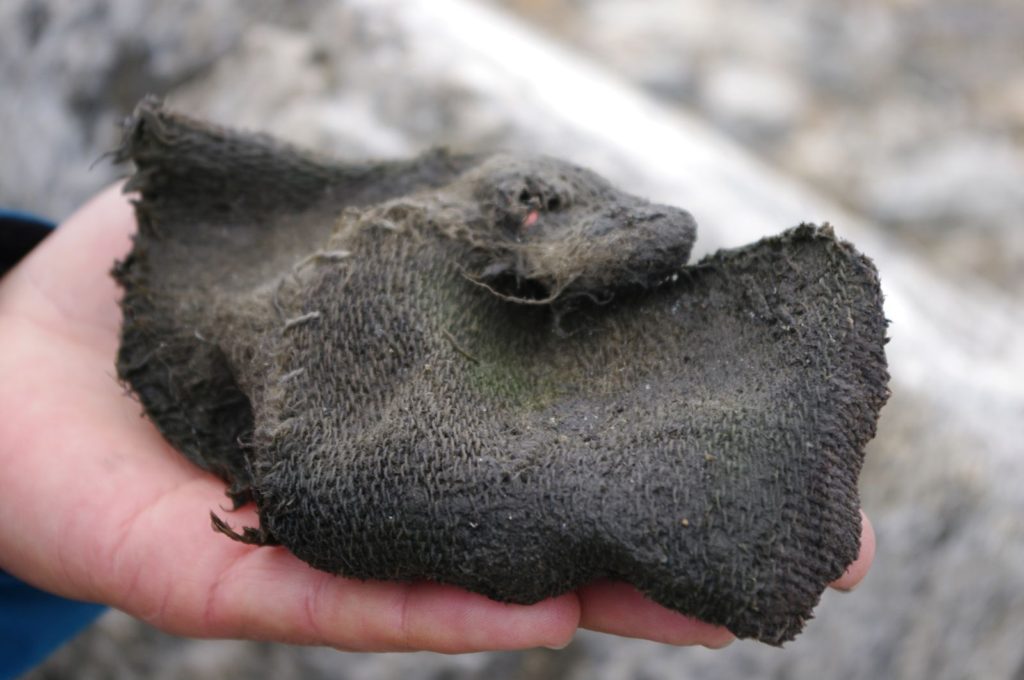
A woven mitten was found at Lendbreen the same year as the tunic, and not far from the tunic either. We speculated if the tunic and the mitten were connected in some way, but the radiocarbon date of the mitten showed that it was c. 1100 years old, from the Viking Age.
More than 70 pieces of textile have also been found at the ice sites in Oppland. These appear to be cut-off pieces of textile, or simply rags. They had reached the end of their life as clothes and were being used for a variety of purposes.
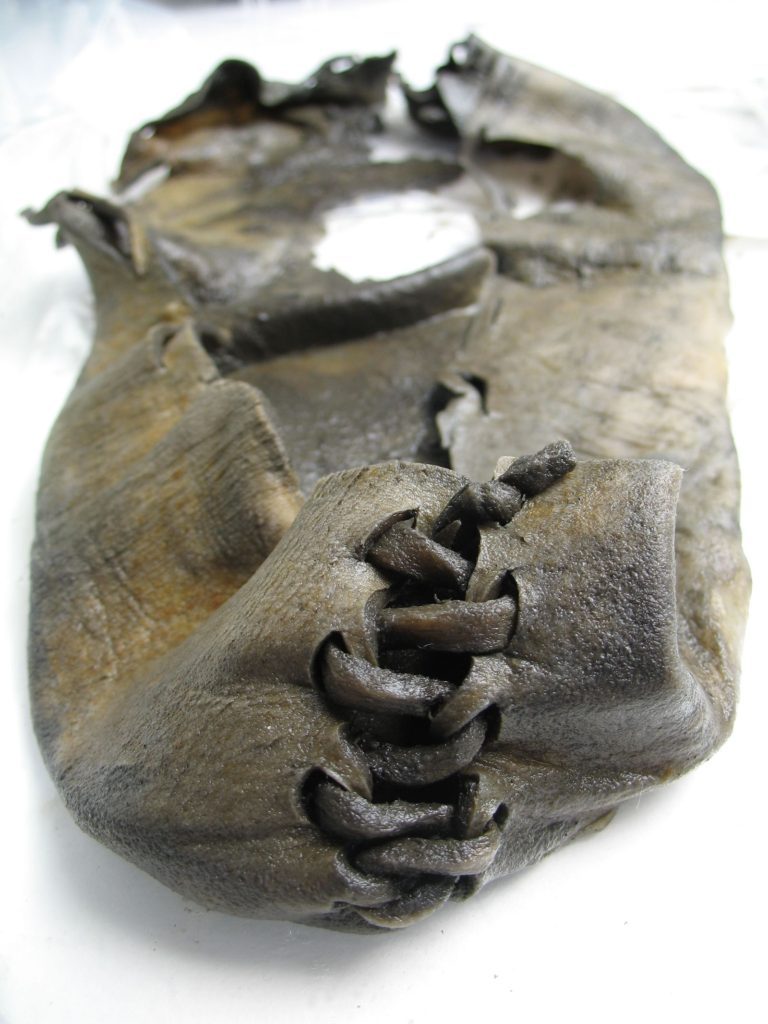
Hide shoes or fragments of such have been found on three sites. In fact, the find of a 3400-year-old hide shoe from an ice patch in 2006 was the starting gun for the work on the ice finds from Oppland. Again, Lendbreen has yielded most of the finds.
Typical for the hide-shoes is that they are made of untanned hide and have the side with hair facing outwards. Having the hair side on the outside may appear strange, but the hide-shoes were probably mainly used when crossing the snow. Having the hair side out would give a better grip on the snow.
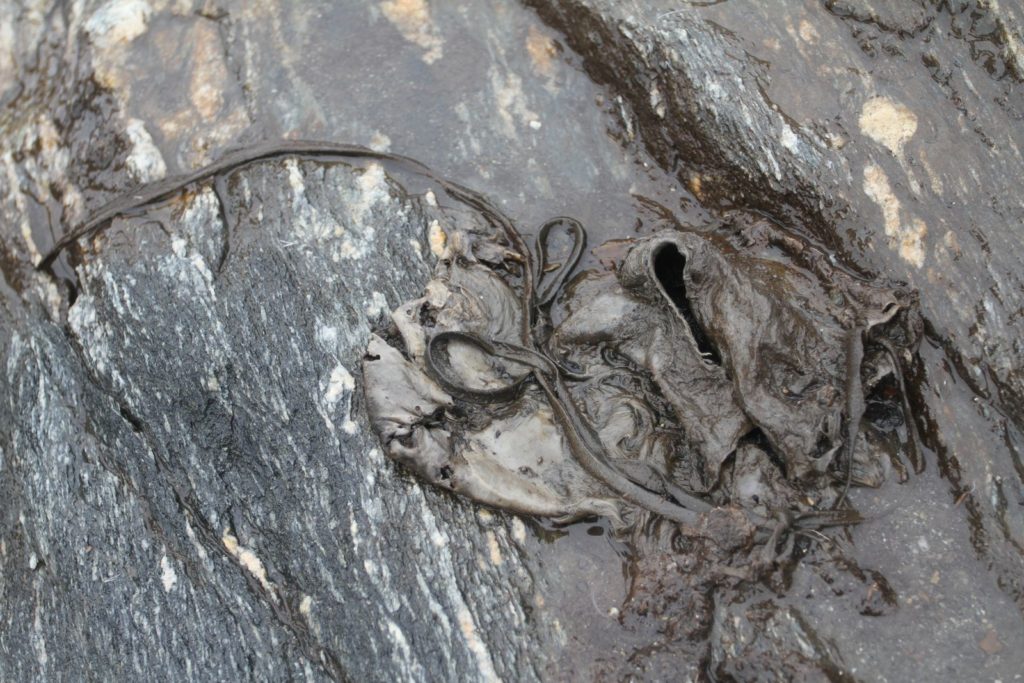
A number of hide-shoes have been found at Lendbreen. Most of these are just fragments and were probably discarded after crossing the ice. One hide-shoe, dating to c. AD 1000, is complete.
